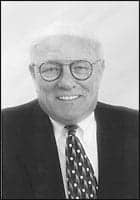Lifestyles and other needs warrant careful consideration when working with older adults.

|
| Terry S. Griffing, MS, is senior manager at Avada Audiology and Hearing Care Centers in Minnesota, and has his office in Minnetonka, Minn |
Older adults make up the majority of patients in most dispensing offices. Hearing care professionals appreciate patients who seem to be exceptionally “with it,” pleasant, and not too demanding. However, many older patients appear to be unusually demanding and take longer to either achieve success or learn new tasks.
Dispensing professionals need to be proactive and devote extra time to better accommodate the needs of these older patients seeking hearing help. Their specialized needs may include special considerations for styles of instruments, technology choices, lifestyle profiles, delivery protocols, and extra time for post-fitting and resolution of complaints. Likewise, aural rehabilitation programs may need to be different or modified.
The purpose of this paper is to suggest some ideas that might lead to greater success with older patients. Too many of the important factors in the dispensing of hearing instruments are not age specific. Our field tends to gravitate to a “one procedure fits all” protocol.
Years of experience suggest that this is inappropriate. Hearing care professionals should be prepared to modify their procedures to include longer appointments and, more importantly, greater sensitivity for the needs of older adult patients.
Styles of Instruments
The receiver in the ear canal/ear and open-ear mini-BTE instrument is increasingly popular. However, these instruments may potentially create special concerns when selected and fit on older adults.
The first question a dispenser must answer is “Are these devices going to be physically manageable?” In some instances, enthusiasm from past successes with these devices creates a tendency to overlook possible post-fitting issues. The openness of the ear canal and petite size make it a popular and easy choice. However, with some older patients—especially with their anxiousness and eagerness to try small devices—it is easy to overlook post-fitting concerns.
Experience with RIC/RITE instruments shows that many older adults have insertion and retention problems. Older patients sometimes find these instruments too difficult to handle (eg, getting the dome properly placed). They may complain the open-ear dome creates physical discomfort, such as itchy ear canals.
Mini-BTE instruments may also be easily lost, especially in the trial period when the patients are not accustomed to the appropriate insertion technique. The previously mentioned problems can compound the typical patient-use problems, with the blame for the lost instruments being directed at the dispensing professional.
Hearing care professionals must be candid with patients wanting these aids and take extra care to review possible problems. It is important to address the patient’s ability and capacity to manage these fittings.
When post-fitting problems and complaints surface, pragmatism is required to resolve the issues. Experience suggests that any style change has the potential to develop into a large obstacle for the patient’s satisfaction with and acceptance of the hearing aid. Sometimes older patients are disappointed with a “forced” style change, feeling they had to settle for their second choice. Too many times this situation devolves into an “uphill climb” to reach good hearing help.
Previous Versus New Users
One cardinal rule in dispensing to older previous users is to avoid style changes whenever possible. A new style of instrument frequently becomes a huge post-fitting obstacle to achieving good success.
When older previous users are forced to learn how to use a different style of hearing instrument, the focus may not be on better hearing, but rather on how do they relearn the usage of new instruments. It should be remembered that patients decide to update their hearing aids to hear better and not to relearn how to wear them.
Whenever a style change is necessary or advisable, the dispensing professional should be prepared to spend extra time counseling, instructing, and practicing with their older patient. The focus should be placed on better hearing performance.
Lifestyle Profile
Everyday lifestyles should be given careful assessment. There may be instances where the “rush” to use premium technology can create a liability. Professional responsibility may dictate recommending and fitting the very best technology; however, on a daily practical basis, this decision may be too costly for some older adult patients.
Dispensers need to realize that, the older the patient, the higher the probability that cost is an issue due to a tighter budget. Housing and medical costs are a substantial portion of older seniors’ disposable incomes, and they worry about having enough to live on. Most older seniors want to hear better for the joy that comes from conversations, but for some the cost may be prohibitive.
An actual case highlights this point. An older woman lived in an assisted living facility—a beautiful but costly place. She wanted better hearing, but her family in attendance at the evaluation seriously questioned the recommendation for a top-of-the-line hearing aid and its corresponding cost. This individual had three activities in which she wanted hearing improvement: conversations in quiet, television, and telephone. All three were difficult for her and caused her a lot of emotional distress. At post-fitting, when the family questioned the high investment of the “best” hearing aid, it was awkward for the dispensing professional to justify the technology and cost—especially when she received nominal benefit relative to the television and telephone. Needless to say, the otherwise excellent digital aids were returned.
A careful lifestyle analysis might have yielded different results. Needs analysis is imperative to address before the older patient agrees to get hearing help. In these analyses, value (benefit divided by cost) should be an over-riding factor.
A candid analysis and discussion during the selection process help create an individualized protocol for success. It is imperative to prioritize issues related to the telephone and television—vital communication connectors for older adults—before the patient agrees on a plan of action. Dispensing professionals sometimes place too much faith in hearing aids relative to their capabilities for seamless telephone and television use. When good results do not happen, troubles begin.
Dexterity Should Not Be an Issue
Hearing care professionals usually make clinical assumptions about senior patients’ dexterity capabilities. Sometimes these assumptions are wrong and may dictate erroneous hearing instrument selection and fitting decisions.
As noted earlier, when a senior patient has learned how to manage a particular style of instrument, staying with that style with upgraded technology is the best way to avoid any dexterity problems. On the other hand, when a style change is made (eg, required by further hearing loss), there is a need to evaluate the patient’s manageability for change.
Older patients probably will require extra time and practice directed by the dispenser. To tell a patient, “Practice and you’ll get used to it,” usually is a return waiting to happen. Without this extra time in the post-fitting stage, it is easy for the older adult to become frustrated over their inability to manage insertion, replace batteries, and adjust switches (eg, t-coil). When too many days pass without successful intervention, some decide “it’s just too much” for them to do. Should this happen, the most likely result is a return along with their return to their old hearing aid technology.
A Different AR Approach
Aural rehabilitation is another concern. Often, it is difficult for older adults to physically keep an aural rehabilitation appointment. Many do not drive and convenient transportation may be unavailable.
Dr Jay McSpaden has successfully used an aural rehabilitation program in which his patients are instructed to read aloud for 30 minutes everyday for the first 30 days of wearing new hearing aids.1 This not only helps them to get used to the changed sound of their own voice, but also appears to improve word recognition. This technique was implemented in one clinic, and word recognition scores increased by 20% to 40%. Needless to say, the dispensing professional now makes it a routine to ask older adults to read aloud daily for 30 minutes. Of course, it is also very important to follow up, check on their activity and needs, and offer encouragement.
Better, more pragmatic, individualized protocols need to be developed for older adults, and these patients require more time in your schedule during those periods when they are able to visit your office. The payoff is more successful hearing for seniors, more referrals, and happier patients.
Reference
- McSpaden JB. Auditory rehabilitation in the digital age. Hearing Review. 2008;15(13):20-22.
Correspondence can be addressed to HR or Terry Griffing at .
Citation for this article:
Griffing T. Crafting protocols: Selection and fitting issues for older adults. Hearing Review. 2009;16(13):18-19.





